08 Mar Supporting Working Moms
Over the past year, more than 2 million women left the workforce at a rate four times higher than men. COVID-19 and its effects on the economy, the school system, and family dynamics have taken a disproportionate toll on working moms.
In August and September 2020, there was a sudden drop in the number of women with children in the workforce. The two groups with the largest workforce decline were women with two children and women whose oldest child is 2 to 6 years old.
As a female-founded and majority women-owned firm, Access Sciences strives to be a champion for working moms and their ability to balance work and home life. Our team would like to show support for all the dedicated, hard-working moms by highlighting some of our own:
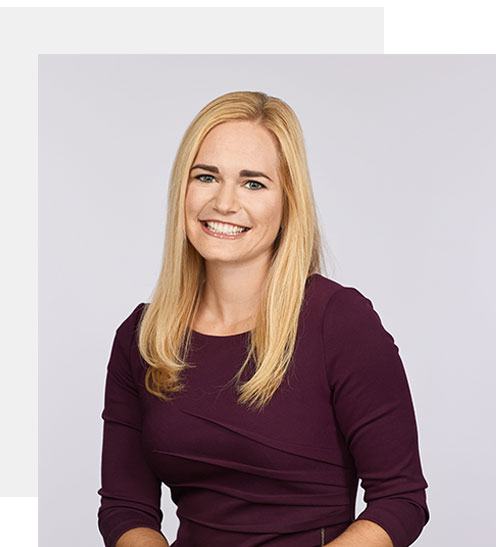
Ashley Schilling
Project Manager | Houston, TX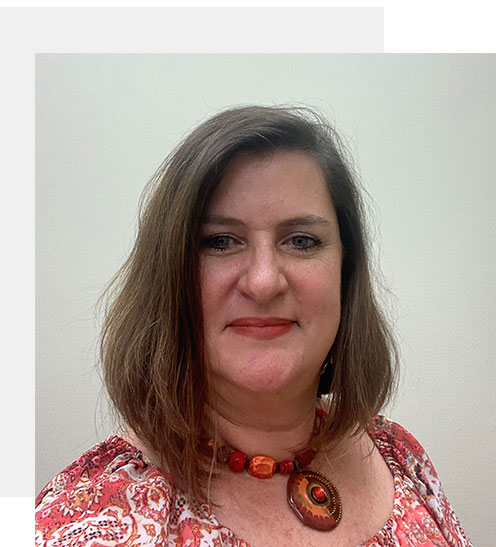
Keli Pisciotta
Project Manager | Baton Rouge, LA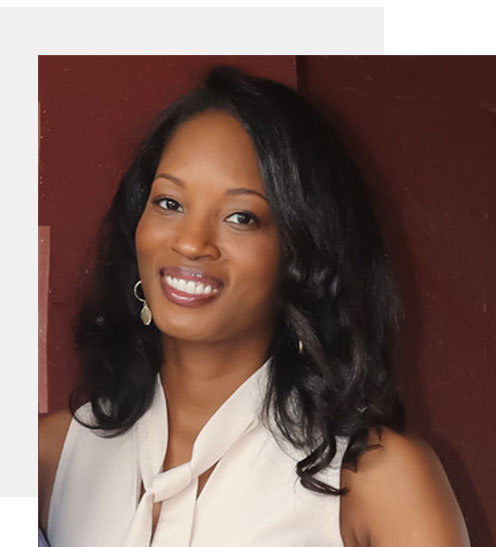
Shermaine Haymer
Project Manager | Baton Rouge, LATHE WOMEN WHO CODE
Ashley Schilling, Project Manager | Houston, TX
Ashley grew up in a small town in Texas where her only exposure to the STEM field came from her older brother. Since he was 13 years older and already in the STEM field as a chemical engineer, he always pushed her to understand the more technical side of things.
“My interest was really based on my brother,” Ashley said. “From early on, he would always get me into gaming and show me things – like, ‘I’m making this.’ Or, ‘This is how this works.’”
While her brother inspired and shaped her interest in technology in the early years of her childhood, Ashley was first introduced to coding, specifically, when she joined her first social media platform – Myspace.
Instead of settling for a normal Myspace page, Ashley picked up on some HTML code so she could customize its background, add pictures, and move widgets around.
Even though Ashley became somewhat familiar with coding through the social media platform, she didn’t consider going into computer science until she was touring colleges to decide where she wanted to go.
During her college tour at Baylor University, she found out the school would offer additional scholarships for women interested in STEM majors. After hearing that, she decided to explore those majors a little bit more.
Then, when she visited the University of Houston (UH), she attended a computer science meeting, met people, and found out that program would also offer scholarships for women who wanted to join.
After that, Ashley made the decision to pursue a degree in Computer Science (Business Option) from UH, kicking off her career path.
“The computer science group did fun things – we would have a little booth and have student-made games set up,” Ashley said. “There were teams and some people would do the graphics and then others would design the actual game. It wasn’t like Pacman with just one little thing on the screen. It would be all decked out.”
Ashley had two internships during her time at UH – one at a software development company which was very coding-oriented, and one at Access Sciences where she helped conduct research on all the functions of SharePoint.
After graduation, Ashley’s internship with Access Sciences turned into a full-time position. Nine years later, she’s serving in a project manager position where she’s able to leverage her coding background to approach problems, think outside of the box, and find solutions.
“Knowing coding concepts makes you think in a different way. It’s a different way of problem solving. I enjoy being the middle person – being able to talk to people and translate their business needs into the technical specs.”
Keli Pisciotta, Project Manager | Baton Rouge, LA
Growing up, Keli always liked math and problem-solving, but the option of computer science didn’t cross her radar until much later when she was looking into her potential college majors.
“I remember being lost because everybody else that was a senior knew exactly what they wanted to do, and I was kind of left there not really knowing what I wanted to do,” Keli said.
Her dad wanted her to be an engineer because (1) there was a shortage of chemical engineers and (2) she was good at science and liked it. And even though that was true – she was good at science and she did like it, she really enjoyed math and problem solving.
“When I was a senior in high school, we had an advanced math class where our teacher also taught us some programming,” Keli said. “I remember at Open House, I was so proud because I designed this little face that had these eyes, and I made them blink. I just thought that was the coolest thing.”
So, Keli and her dad started looking at computer science which had two options – a business option and a scientific option. The courses offered in the scientific option included chemistry, physics, a lot of calculus, and a lot of math which, of course, Keli loved. So, that’s what she went with.
After graduating with a degree in Computer Science (Science Option) and a minor in math from Southeastern Louisiana University, Keli’s been able to do it all.
She landed her first job out of college at a chemical plant where she was a technical team of one, doing everything from splicing wires to programming to installing applications.
Her second job was a big shift as she joined an IT team of 100+ people at a mortgage company. There, she learned project management skills through leading her own team.
After that, she became a portfolio manager for The Shaw Group. Not only did she get back into programming, but she also managed aviation, legal, safety, business development, and more.
Now, Keli’s still cultivating her project management skills as a project manager for one of Access Sciences’ client projects in Baton Rouge, LA.
“When you program, you can program for any type of business from aviation to legal to accounting. It doesn’t matter where you are, you can improve their processes.”
Shermaine Haymer, Project Manager | Baton Rouge, LA
Throughout Shermaine’s elementary school, junior high, and high school years, there weren’t any programs or clubs available to spark interest in technology apart from a standard typing class. But she wishes there had been.
“I think that’s why I volunteer so much for those types of programs now because for me, there was nothing,” Shermaine said.
Her decision to pursue a Computer Information Systems degree (CIS) from Grambling State University was, at the time, purely based on potential salary. When she was considering her options, someone had told her, “CIS is really cool – You can graduate with a bachelor’s degree and make a really great salary.” And that was enough to spark her interest and look into it.
“The first programming class I took was C++ programming, and it was the most challenging class I had ever taken. But it was a match made in heaven. I was so challenged and excited about programming – it fit me perfectly.”
After graduating, Shermaine went on to her first job at State Farm where she started her development experience which was intense but a great experience for a new programmer. The company had a development boot camp where she had to go through a six-week program to learn all about State Farm’s different environments. After that, there were more lessons to learn along with weekly programming tests that she had to pass in order to keep her job.
Then, Shermaine took a break to get her master’s degree in Computer Science from Southern University and A&M College in Baton Rouge before entering her next position with Lockheed Martin. There, she worked on the Paperless Manufacturing Engineering System (PMES).
“That software was so cool – It managed every single component of the space shuttle down to even a tiny nail,” Shermaine said.
After that, she did a lot of work for the State of Louisiana in Baton Rouge before joining as a File Net Subject Matter Expert and then moving into a project manager role for one of Access Sciences’ long-term client projects.
In the early days of her career, Shermaine found that there weren’t that many women role models – or women in general – in her field. But over time, she’s seen things get better. She’s seen more and more tech-related resources and programs become available. And now, if you need a mentor, it’s easy to reach out and find one because of that.
Since Shermaine didn’t have those available to her growing up, she’s become passionate about volunteering and helping those who may not have access to those resources and programs.
In fact, a few years ago, she helped a friend set up a Girls Who Code chapter at a school in Baton Rouge.
“I have a good friend who volunteers at her children’s school and she said, ‘I want to set up a Girls Who Code chapter, but I have to have a developer to be our sponsor.’ And I was like, ‘I would love to do that.’ So, we filled out all the paperwork, she received her certificate, and they became an official chapter.”
Shermaine also spends a lot of time with Futures Fund, an organization in Baton Rouge that provides coding classes to kids who are financially unable to afford those classes on their own.
“Unless you’re in a really great school district or private school, you don’t necessarily have a coding class,” Shermaine said. “So, every Saturday, they spend five hours learning how to code, learning life skills, and listening to speakers. We’ve had students who have gone to college, won science scholarships – It’s really changing lives.”
ADVICE FROM THE WOMEN WHO CODE
Since Ashley, Keli, and Shermaine have entered the workforce, more and more resources have become available to introduce young women to the tech field and, hopefully, spark an interest. Organizations like Girls Who Code are a big part of that shift.
And even though things are continually getting better, there’s still work to be done to close the gender gap in tech, so Ashley, Keli, and Shermaine offered their advice to young girls and women interested in the field:
Ashley: “I’ve noticed recently that they have a lot of board games and computer games out there now for kids as young as six years old that introduces them to concepts of coding. They can learn how to follow a code or learn how to program something super tiny just so they understand the concept behind making something electronic work. I think it’s so cool that they have that out there. So, I would encourage anyone who has the slightest interest to get some kind of game like that and just see if it’s fun – if it sparks anything in you.”
Keli: “There are a lot of plusses to this field. One, it’s very portable. It doesn’t matter where you are, you can improve their processes. And the fun thing about it is you get to meet people from all the different walks, and you get to learn a little bit about what they do. So, not only do you learn what’s in your field, you also get to learn about other people and about their walks of life. It’s pretty well-rounded.”
Shermaine: “Young ladies always think that it’s going to be too difficult, that you need a certain background – to be really focused on math and science your entire life before you enter the field of development or coding. That’s not true. I came into this from a completely different path. And now, what I love about what I do is that I can solve problems every day. You get to come up with really unique solutions to very interesting problems that a lot of people don’t understand.”
For more on Project Manager, Shermaine Haymer’s journey as a woman who codes, her thoughts on ethical computing, and what it’s like to be a parent in a pandemic listen to Episode 6 of our Access Answers Podcast.
Over the past year, more than 2 million women left the workforce at a rate four times higher than men. COVID-19 and its effects on the economy, the school system, and family dynamics have taken a disproportionate toll on working moms.
In August and September 2020, there was a sudden drop in the number of women with children in the workforce. The two groups with the largest workforce decline were women with two children and women whose oldest child is 2 to 6 years old.
As a female-founded and majority women-owned firm, Access Sciences strives to be a champion for working moms and their ability to balance work and home life. Our team would like to show support for all the dedicated, hard-working moms by highlighting some of our own:
STAR STEFKA-BORG
CHIEF FINANCIAL OFFICER + MOM OF ALEX (16) AND ALLISON (10)
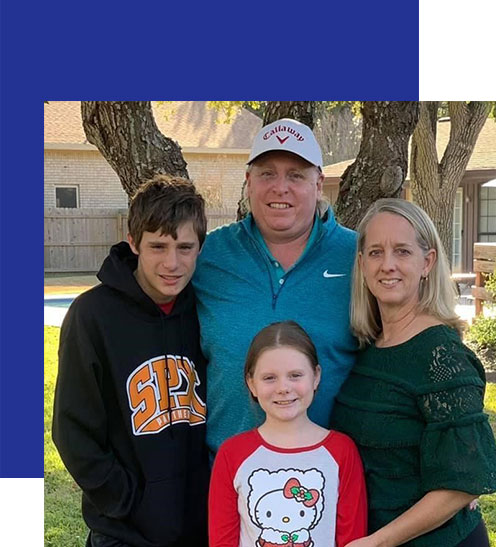

Star is a working mom of two kids and a “pandemic puppy,” Elsa. Since COVID-19 disrupted normal day-to-day activities, things have been quieter in the Stefka-Borg family.
“It was challenging before COVID because there were more school activities,” Star said. “I kind of miss it because I feel like the kids are missing out on life experiences and that kind of makes me sad.”
Because of the pandemic, Alex and Allison mainly go to school and come home – and that’s it. Most of their afterschool activities have been put on hold, which makes it hard to see their friends and even family members.
For example, Alex was confirmed at church a couple weeks ago – an important rite of passage that would usually call for grandparents, godparents, and other family members to come into town to attend and celebrate. But, because of COVID-19 protocols, only Star, Jason (her husband), and Allison could attend.
Allison used to be heavily involved in afterschool activities like the chess club and basketball, but this past year, her school temporarily paused all clubs and competitive sports. Thankfully, she has been able to virtually participate in Girl Scouts and even sell cookies from their driveway and a booth at church.
According to Star, balancing work, school, and home life isn’t necessarily the hardest part about being a mom right now – it’s managing the stress level of the pandemic. The ability to hang out with friends and spend time with the extended family has been minimal for more than a year now. Those things were a way to take a break, relieving stress that comes from school and work.
But, despite the stress, there are some positive things that came out of the pandemic.
“I think we spend more time as a family now than we did back then,” Star said. “Before, the kids did more stuff with their friends and then my husband and I would go out.”
The Stefka-Borg family even added a new member to their family – a pandemic puppy named Elsa. Star’s kids had always wanted a dog, and it seemed like the perfect time since Jason was working from home full-time. Even though Elsa can be a distraction when it’s time to get some homework done, Star said she’s been such a great addition to the family.
ADVICE FOR MOMS: ”Don’t let the working job rule your life. Definitely have stop and start times. Definitely have time for you and self-care like going to the gym or getting your nails done – anything that takes you out of either the working mom role or the regular mom role.”
When Alex was young, Star began to set hard stop and start times at work for herself. Before becoming a mom, she would sometimes work twelve-hour days and be in the office until 2 a.m. Now, she really values a healthy work-life balance. Once she gets to work, she sets her daily goals and strives to accomplish them all in that 8 to 5 timeframe.
“When I’m at work, I’m head-down the whole time,” Star said. “Because when I leave here, I go pick someone up from school. Then we go home, and there’s dinner. Once I’m home, my mom job starts.”
SAPANA RAUT
CONSULTANT + MOM OF AARUSH LEO (6) AND ANVEER TIGER (3)


When the pandemic led to a new work-from-home and learn-from-home lifestyle, working mom Sapana had to shift her schedule significantly. Some things became easier with the new schedule, and some things became more difficult to manage.
“Imagine having two kids at home all the time,” Sapana said. “Sometimes they are so loud, sometimes they are so cranky, and sometimes they are so good. It’s unpredictable right now.”
Before COVID-19, Sapana worked in the office most of the time, enlisting the help of grandparents or daycare to care for Aarush Leo and Anveer Tiger during work hours. Even then, there were a lot of competing responsibilities to manage.
When her older son, Aarush Leo, was still doing school in person, Sapana had to participate in his class activities like organizing the Halloween or Valentine’s Day parties. These were usually held during work hours, so she often had to plan her work schedule around those events. It wasn’t always easy, but it was manageable thanks to a company culture that supports a healthy work-life balance.
Now, both Sapana’s job and Aarush Leo’s school are virtual for the time being, which means everyone is at home together all day, every day.
“There are so many times where I just want to be like, ‘Hey, watch TV while I’m in a meeting.’ But at the same time, I know that’s not a good way to parent,” Sapana said.
Things can get very hectic at home between the two boys and Sapana’s work schedule. Aarush Leo and Anveer Tiger will be best friends for two hours while they play, and then things can get sour. If you ask Sapana what her two boys do to keep busy while she’s in a meeting, she’ll jokingly say “They fight, a lot!”
ADVICE FOR MOMS: “Relax. Take 30 minutes or an hour away from everything. Keep yourself content any way you can. For me, I’m taking care of myself. I’m working out so I don’t get stressed when the kids are going crazy.”
One thing that’s really helped Sapana as a working mom is setting a daily routine with time allocated for self-care, work, family, and hobbies.
She starts her day early at 6 a.m. so she can have time for herself. She goes to the gym and then comes home, spending 30 minutes doing nothing (not even looking at her phone) before she starts the day.
Then, using the time she would usually take to travel to the office, Sapana makes the boys breakfast and sets up her older son’s at-home classroom.
Finally, it’s time to start the workday. The competing priorities unveil themselves when, sometimes, Sapana’s working and Aarush Leo comes to her for help with his homework assignments. According to Sapana, in-person school is definitely easier for her son because he’s able to see friends and better communicate with teachers.
“Online school is kind of tough on him most of the time,” Sapana said. “Right now, he only has one half an hour class – that’s it. Then he will have all these assignments, and he’s in kindergarten, so he doesn’t even know how to read them.”
Then by 6 p.m., she’s usually done with everything at work. So, from then until 8 p.m., she gets to spend time with her sons and her husband. They will either watch a movie, play board games, and (if the weather’s nice) go hiking or play outside together.
After the kids go to bed, Sapana manages her pizza business which she calls her hobby. She started her journey to manage a Marcos Pizza when she was at home for two to three months, waiting for Anveer Tiger to be born. She wanted explore what business was like, and she wanted to start something simple that she could do herself. Now, two and a half years later, it’s what she loves to focus on apart from her regular work and home life.
“I’m the type of person who can’t sit idle,” Sapana said. “I need my regular schedule. Keeping yourself content in any way you can will help a lot to not get stressed when things are going crazy.”
SARAH BYBEE
DOCUMENT CONTROL LEAD + MOM OF MADISON (13) AND JACKSON (10)
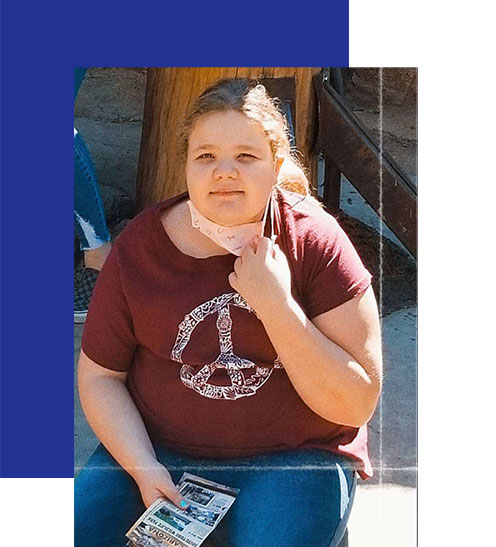

As a working mom of two, Sarah experienced a whirlwind of a school year as her kids’ classes went from 100% virtual, to 100% in-person, to a hybrid mix of the two – then back to 100% in-person.
“We just take it one day at a time, honestly,” Sarah said. “It’s challenging, but we just get through it.”
When the pandemic first forced schools to shut down, Madison and Jackson transitioned to full-time online classes. Since Madison was older, it was a bit easier for her. But Sarah had to stay on top of Jackson to make sure he turned in all his assignments and attended all his classes.
At the time, Sarah was also full-time online for work, which made it challenging to balance that work and home life. Not only did she have to keep track of all her work meetings, but she now had to keep track of her kids’ classes too.
“Not going to sugarcoat it – it was hard,” Sarah said. “We were all sitting in one room so I could go back and forth between it all. It was difficult.”
However, the 100% virtual wasn’t the worst learning set-up for Sarah and her kids… the hybrid classes were.
In that set-up, Madison and Jackson only went into school twice a week. The school district had divided schools in half by last name, and the students would switch off between going to in-person classes and doing online assignments. Because of that, teachers had to teach the same lesson two days in a row, and students only received 50% of the curriculum during that time period.
“The hybrid – that was tough for them,” Sarah said. “It either just needed to be 100% online or 100% in-person. It was too difficult to go back and forth.”
ADVICE FOR MOMS: “Be forgiving of yourself. You have to work, you have to be a mother, you have to be a wife – sometimes your house is not going to be perfect. Find the things that might be important to you, but not really important in the grand scheme of things and try letting those things go.”
Sarah said her personal struggle as a working mom is that she’s a neat freak, and she often feels like the house must be clean all the time. It took a while for her to realize that as an employee, a mom, and a wife – you just can’t do it all. So, she works to reprioritize and take it easy on herself every day.
“As a working mom and wife, just be a little bit easy on yourself,” Sarah said. “You’re doing great.”
Access Sciences would like to thank all the dedicated, hard-working moms for their valuable contributions both at home and in the workforce. In honor of International Women’s Day, take the time to show appreciation for a working mom in your life.
Celebrate by learning more
Listen to our latest Access Answers Podcast with Principal Lisa Cromwell as she discusses women empowerment, “she-cession,” and her own life journey as a woman.



